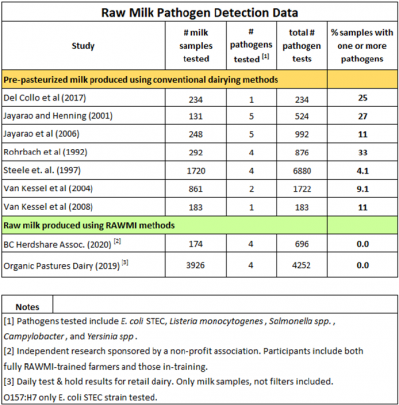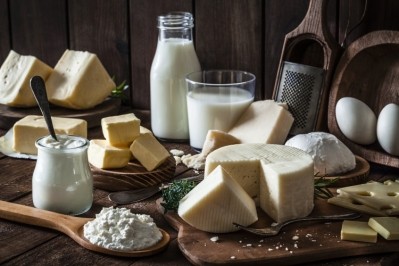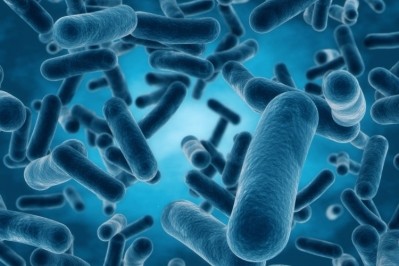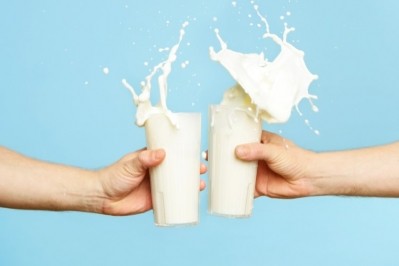Going 'raw': A business opportunity or a risk not worth taking?
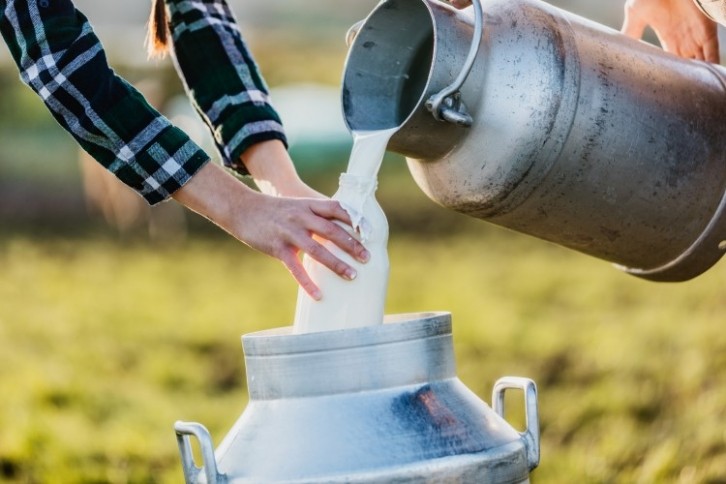
At best it’s ‘low-risk’ and at worst, it can cause foodborne outbreaks and life-threatening diseases. And yet, more US states are legalizing the sales of raw milk, either in retail or direct-to-consumer. The regulatory landscape is far from simple - in short, producers can market raw milk within states where the practice is legal, but federal law bans the sale of raw milk products across state borders. And when it comes to liability, consumers can still take legal action if the raw dairy they've purchased makes them ill due to bacterial contamination. So, why sell raw dairy at all?
While the Centers for Disease Control and Prevention (CDC) warns that raw milk consumption carries a risk and doesn’t recommend its consumption, some consumers perceive raw milk as a healthier type of milk, and are willing to seek it out. According to a 2014 survey into the consumption of raw milk carried out by two Johns Hopkins Hospital researchers, the main reason why consumers drank raw milk was the perceived health value of the beverage. In terms of more recent market trends, consumers have continued to prioritize health post-COVID-19, with Deloitte Insights estimating that 84% of consumers consider health and wellness when purchasing fresh food, and 80% think fresh food is healthier for then than packaged or processed food. In 2007, the CDC estimated that around 3% of the US population drank raw milk, but there’s no official data on consumption trends in 2024.
The Raw Milk Institute, which has established standards and food safety tools to help farmers produce low-risk raw milk, claims that consumer demand is growing. “From our internal polling of dozens of raw milk dairies in the USA and Canada, farmers have reported that raw milk demand has dramatically increased over the last few years,” Sarah Smith, vice-president and board secretary at the Raw Milk Institute, told DairyReporter.
The factors that have led to this increase are several, she added: “More people focusing on building immune system strength as a result of COVID-19. People are looking for natural, time-tested ways to improve their health and fertility. After experiencing food insecurity during COVID-19 (with many stores not having basic food items available), many people are seeking local and homegrown foods.
“Online influencers including doctors, movie stars, race car drivers, and regular people have created a huge interest in raw milk. And many people who choose raw milk are concerned about animal welfare. They choose to purposely source their food from smaller farms who ensure that animal welfare is a top priority.”
Asked how producers can benefit from the legalization of raw milk sales in more US states, Smith said: “Raw milk provides a pathway to success and sustainability for family farms if they are willing to learn and implement specialized production practices to ensure their milk is low-risk. With the increased demand for raw milk, now is a prime time for more states to legalize raw milk for the benefit of both their farmers and consumers."
She added: “Raw milk presents a unique farmstead product that brings all the added value back to the farmer with an incentive to work on quality. By selling directly to consumers, raw milk farmers are able to obtain greater financial rewards for their work, while consumers benefit from the improved flavor and nutrition. It’s a win-win for farmers and consumers.”
But is it really a win-win? In states that back direct-to-consumer sales, farmers still need to obtain a permit – sometimes, multiple permits – and producers aren’t protected from legal action taken by consumers who fall ill due to bacterial contamination.
However, Smith suggests that following the standards established by her organization has helped reduce risk. “We establish raw milk standards and train raw milk farmers in how to carefully produce raw milk for direct human consumption,” she explained. “Our standards include stringent bacterial standards for raw milk alongside grass-to-glass risk management practices to ensure that the milk is produced cleanly and will be unlikely to contain pathogens. We have trained hundreds of farmers across the USA and internationally in low-risk raw milk production.”
Smith also shared a table (see below) comprising pathogen detection data from pre-pasteurized milk produced using conventional methods (where pathogens were detected in up to 33% of samples) versus milk produced for direct human consumption according to the organization’s methods (0%). “It is clear from this test data that pre-pasteurized milk is categorically different from raw milk intended for direct human consumption,” Smith concluded.
However, according to the CDC, negative tests don’t guarantee that raw milk is safe, as tests do not always detect low levels of contamination, which can also cause sickness. Organic milk isn’t inherently safer than conventional either according to the body, and nor is milk sold at farmers markets. “Following good hygiene practices on the farm and during milking can reduce the chance of milk contamination – but not eliminate it,” reads the officials' advice.
As of the health benefits, we asked Smith what evidence is there of raw milk’s superiority there was in comparison with pasteurized dairy milk. The Raw Milk Institute vice-president shared a list of studies, but we found that some of these came with caveats, or were published more than a decade ago.
For example, in a study entitled ‘Consumption of unprocessed cow's milk protects infants from common respiratory infections’, the authors concluded that ‘[e]arly life consumption of raw cow's milk reduced the risk of manifest respiratory infections and fever by about 30%’ but added: ‘If the health hazards of raw milk could be overcome, the public health impact of minimally processed but pathogen-free milk might be enormous…’
Other investigations, such as this study, did link certain compounds found in raw milk with specific health benefits but stopped short of recommending direct raw milk consumption, instead suggesting fortification as a potential solution.
Isabel Maples, MEd, RDN, a registered dietitian nutritionist, said that research supporting the benefits of raw milk is lacking. “When I’ve heard raw milk enthusiasts talk about benefits of raw milk, they quote research results done practically a hundred years ago,” she said. “They are not talking about today’s farming practices, the modern pasteurization process, or up-to-date nutrition knowledge.”
On whether raw milk was truly better than pasteurized in terms of nutrition, she added that ‘any difference in nutrition is minimal’. “Research does not show that raw milk is nutritionally superior to pasteurized milk: the claims of nutrition and health benefits with raw milk consumption have not been substantiated by science. Instead, pasteurization practically eliminates the dangers of milk-related illnesses.
“Pasteurized milk offers the same great nutrition that raw milk does, without the potential food safety dangers. Drinking raw milk instead of pasteurized milk offers lots of risk without nutrition gains.”
Pressed on how pasteurization affects milk’s nutrient composition, she said: “Heating milk to a temperature can change some of the enzymes in the milk. Raw milk proponents claim those enzymes are beneficial for digesting lactose. But enzymes are species-specific - cow enzyme work on cows, and human enzymes work on humans. Instead, humans have lactase in the intestines to break down lactose.
“In addition, during the digestive process - including the high acid environment of the stomach – enzymes, just like other proteins, are broken down into amino acids. Digestion means that proteins are broken down into small, absorbable, usable parts and then the body rebuilds the different protein it needs.
“Some say that the bacteria in milk is a good thing because it can help break down lactose. It’s true that the bacteria in our digestive systems do help us break down lactose. However, a less risky way than raw milk to get in more bacteria is to consume yogurt, cheese and other fermented foods.”
Of the loss of nutrients in pasteurized milk, Maples added that vitamins B and C do get lost, but the lower risk of getting ill is ‘well worth this minor loss’.
“Those vitamins are not ones that are milk’s nutrition claim-to-fame anyway,” she added. “Those nutrients are usually easy to get in other foods, are not ones that Americans tend to be low in, and milk’s not a major source of those nutrients anyway.”
So why are some consumers turning to raw milk? “The less processed, ‘more natural’ feel of raw milk versus pasteurized milk is definitely part of the appeal in going to great lengths to get raw milk,” Maples told us. “There are also misconceptions about lactose intolerance, food allergies, and asthma,” she added, referring us to official FDA statements on the topic.
“Raw milk enthusiasts claim that raw milk drinkers won’t have issues with intolerance to the carbohydrate in milk or allergic reactions to the proteins in milk. But that theory is scientifically ungrounded.”
Expanding on the risks from consumption of raw milk, she said: “Raw milk can cause food poisoning with days of digestive discomfort, like diarrhoea, nausea and vomiting. But it can also cause more serious illness, including hospitalization, death, miscarriages, and damage to an unborn child.”
She cited FDA data listing 143 reported illness outbreaks linked to raw milk consumption contaminated with pathogenic bacteria such as listeria, campylobacter, salmonella, and e. coli, since 1987. In addition, 9 out of 10 raw milk outbreaks happen in states that legally allow milk raw sales, and 9 out of 10 milk-related food safety issues involve raw milk.
So if even negative tests don’t suffice in proving that raw milk is pathogen free, how can producers – or consumers – be sure that raw milk is free from harmful bacteria? “They really can’t tell,” Maples told us. “There’s this belief that if you know the source, the farmer, the farm, then it’s OK and you can trust the milk to be safe.
“Shoppers have a high degree of trust for dairy farmers and their values, maybe in part because most dairy farms are family farms. And there’s good reason for that consumer trust. Dairy farmers take pride in caring for their animals and in producing safe, wholesome milk. They also get paid more for producing higher quality milk. Plus, their own families drink that milk.”
“But the reality is that even with the best quality control measures and strict sanitation efforts, the milking process is far from a sterile process,” she added. “Manure happens; cows drink a bathtub-full of water and eat a hundred pounds of feed per day. And cows aren’t potty-trained. The milking parlor is not a sterile environment. Pasteurization provides an extra step that saves lives.”
